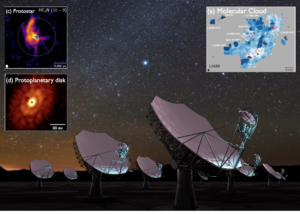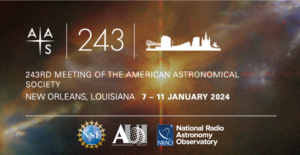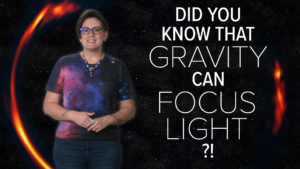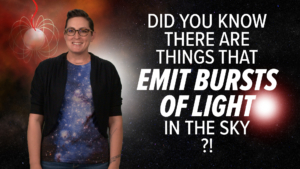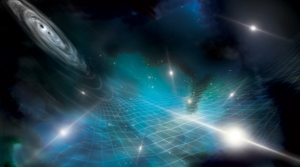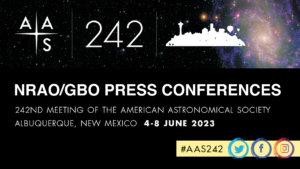Over the course of two scientific meetings, held in 2022 and 2023, German astronomers have collected 41 highly compelling science cases involving 57 unique authors from 19 German institutions, all aspiring to use the ngVLA.
NRAO in the press at AAS 243
New scientific results from the Atacama Large Millimeter/submillimeter Array (ALMA), the Very Large Array (VLA), and Green Bank Observatory…
The Baseline #17: Gravitational Lensing: Focusing On The Cosmos
Gravity can focus light like a lens, allowing astronomers to see distant galaxies and explore dark matter. Join our host Summer Ash of the National Radio Astronomy Observatory as she talks about how astronomers use gravitational lensing to study the universe.
Baseline 16 — Fast Radio Bursts: Bursting with Mysteries
Fast radio bursts are powerful flashes of light that shine for only milliseconds. Join our host Summer Ash of the National Radio Astronomy Observatory as she talks about how astronomers study these mysterious bursts, and what might be causing them.
Scientists use Exotic Stars to Tune into Hum from Cosmic Symphony
NANOGrav’s most recent dataset offers compelling evidence for gravitational waves with oscillations of years to decades. These waves are thought to arise from orbiting pairs of the most massive black holes throughout the Universe: billions of times more massive than the Sun, with sizes larger than the distance between the Earth and the Sun.
NRAO and GBO Results Presented at Multiple AAS 242 Press Conferences
New scientific results from the Very Long Baseline Array (VLBA), the Very Large Array (VLA), and the Green Bank Observatory (GBO) will be revealed at multiple press conferences during the 242nd meeting of the American Astronomical Society (AAS) from June 5-7, in Albuquerque, New Mexico.






